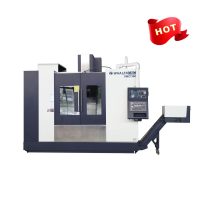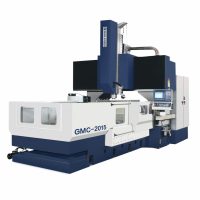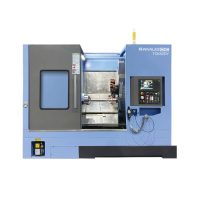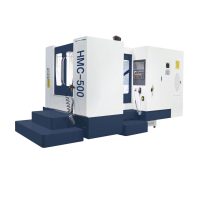E-Mail:sales@whalescnc.com
E-Mail:sales@whalescnc.com
What Are the Different Types of Machining Centers?
Welcome to the fascinating world of machining centers! If you’re in the manufacturing industry, you know how crucial these powerhouses are for shaping materials into precise parts. But did you know that not all machining centers are created equal? Understanding the different types of Machining Centers can significantly impact your manufacturing efficiency and output. So, let’s dive in!
What is a Machining Center?
A Machining Center is essentially a multi-functional machine that can handle a variety of tasks, from milling and boring to drilling and threading. Imagine a Swiss Army knife, but for manufacturing.
- Multi-Process Nature: One machine can perform multiple operations, reducing the need for specialized machines.
- Efficiency: With automated controls, these centers can work around the clock, increasing productivity.
Classification by Spindle Position
Understanding the spindle position is crucial for selecting the right machining center for your needs. There are mainly two types:
- Vertical Machining Centers
- Structure: The spindle is oriented vertically.
- Applications: Ideal for die casting and handling plate stock.
- Advantages: Easier to set up and generally less expensive.
- Disadvantages: Limited in the size and weight of materials it can handle.
- Horizontal Machining Centers
- Structure: The spindle is oriented horizontally.
- Applications: Suitable for aerospace and automotive parts.
- Advantages: Can handle larger and heavier materials.
- Disadvantages: Generally more expensive and complex to operate.
Classification by Number of Axes
When it comes to machining centers, the number of axes can greatly influence the complexity of the parts you can produce. Here’s a breakdown:
- Three-Axis Machining Centers
- Structure: Operates on the X, Y, and Z axes.
- Applications: Suitable for simpler parts and basic milling operations.
- Advantages: Easier to operate and less expensive.
- Disadvantages: Limited in terms of complex geometries.
- Four-Axis Machining Centers
- Structure: Adds a rotary table to the existing three axes.
- Applications: Useful for creating more complex parts.
- Advantages: Increased flexibility in part orientation.
- Disadvantages: Requires more skilled operators.
- Five-Axis Machining Centers
- Structure: Operates on five different axes simultaneously.
- Applications: Ideal for aerospace and medical components.
- Advantages: Can produce extremely complex parts.
- Disadvantages: High cost and steep learning curve.
- Multi-Axis Machining Centers
- Structure: More than five axes for ultra-complex parts.
- Applications: Used in specialized industries like robotics.
- Advantages: Almost limitless possibilities.
- Disadvantages: Very expensive and requires specialized training.
Burst of Creativity: Imagine a ballet dancer gracefully moving in all directions. That’s what a multi-axis machining center can do with a piece of metal!
Classification by Processing Procedures
Different machining centers are designed for specific processing procedures. One such type is:
- Gantry Machining Center
- Structure: Features two columns for added stability.
- Applications: Perfect for large and heavy parts.
- Advantages: High rigidity and stability.
- Disadvantages: Takes up more space and is more expensive.
Classification by Number of Workbenches
The number of workbenches in a machining center can affect its efficiency and throughput. Here’s how:
- Single Table Machining Centers
- Structure: One workbench for holding the workpiece.
- Applications: Suitable for small to medium-sized batches.
- Advantages: Simplified setup and operation.
- Disadvantages: Lower throughput compared to multiple table centers.
- Double Table Machining Centers
- Structure: Two workbenches for simultaneous operations.
- Applications: Ideal for medium to large production volumes.
- Advantages: Increased efficiency and reduced idle time.
- Disadvantages: Complexity in synchronizing the tables.
- Multiple Table Machining Centers
- Structure: More than two workbenches for mass production.
- Applications: Used in automotive and aerospace industries.
- Advantages: Maximum throughput and efficiency.
- Disadvantages: High cost and complexity.
Classification by Tool Changing Method
The method of tool changing can also be a deciding factor in choosing a machining center:
- Manipulator Tool Change Machining Center
- Structure: Uses a robotic arm for tool changing.
- Applications: High-volume production.
- Advantages: Speed and precision.
- Disadvantages: Higher cost and maintenance.
- Non-Manipulator Tool Change Machining Center
- Structure: Manual or semi-automatic tool changing.
- Applications: Low to medium production volumes.
- Advantages: Lower cost and easier maintenance.
- Disadvantages: Slower tool changing process.
Classification by Machining Accuracy
The level of precision you need can dictate which type of machining center is best for your project. Here are the categories based on machining accuracy:
- Ordinary Precision Machining Centers
- Structure: Standard components and tolerances.
- Applications: General manufacturing and prototyping.
- Advantages: Affordable and widely available.
- Disadvantages: Limited to less critical applications.
- High-Precision Machining Centers
- Structure: Enhanced components for tight tolerances.
- Applications: Aerospace, medical, and automotive industries.
- Advantages: High accuracy and repeatability.
- Disadvantages: Expensive and requires skilled operators.
- Ultra-Precision Machining Centers
- Structure: Specialized components for extreme tolerances.
- Applications: Nanotechnology and scientific research.
- Advantages: Unparalleled accuracy.
- Disadvantages: Prohibitively expensive and limited availability.
Perplexing Fact: Did you know that ultra-precision machining centers can achieve tolerances down to a few nanometers? That’s thinner than a human hair!
Components of a Machining Center
Understanding the basic components can help you make an informed decision:
- Bed, Column, and Workbench: The foundational parts that provide stability.
- Spindle Parts: Where the cutting tools are mounted.
- CNC System: The brain of the operation, controlling all movements.
- Automatic Tool Changing System: For seamless transition between different tools.
Main Items Processed on a Machining Center
Different machining centers are specialized for various types of items:
- Box Parts
- Applications: Automotive and consumer electronics.
- Advantages: Efficient for batch processing.
- Disadvantages: Limited to box-like shapes.
- Complex Surfaces
- Applications: Aerospace and medical devices.
- Advantages: Capable of intricate geometries.
- Disadvantages: Requires advanced programming.
- Irregular Parts
- Applications: Custom manufacturing and prototyping.
- Advantages: Flexibility in design.
- Disadvantages: May require specialized tooling.
- Sleeves and Plates
- Applications: Construction and industrial machinery.
- Advantages: High material removal rates.
- Disadvantages: Limited to flat or cylindrical shapes.
Personal Story: I once worked on a project that required machining complex surfaces for a medical device. The level of detail was astonishing, almost like sculpting a masterpiece!
Conclusion
Understanding the different types of machining centers is crucial for making informed decisions in your manufacturing processes. From spindle orientation to the number of axes and workbenches, each classification serves specific needs and applications.
Whether you’re dealing with Vertical Machining Centers, Horizontal Machining Centers, or Gantry Machining Center, the right choice can significantly impact your efficiency, output, and ultimately, your bottom line.
Need to buy a machine tool?
You can upload drawings of machined parts. Our experts will help you determine the best machine for your needs.
About WhalesCNC
WhalesCNC is a high-quality CNC machine tool manufacturer located in Xuzhou, Jiangsu, China. It has more than 20 years of manufacturing experience and is committed to comprehensive solutions to improve cutting efficiency.




